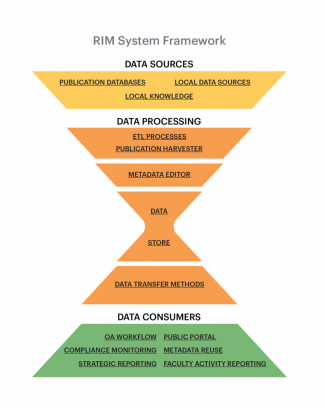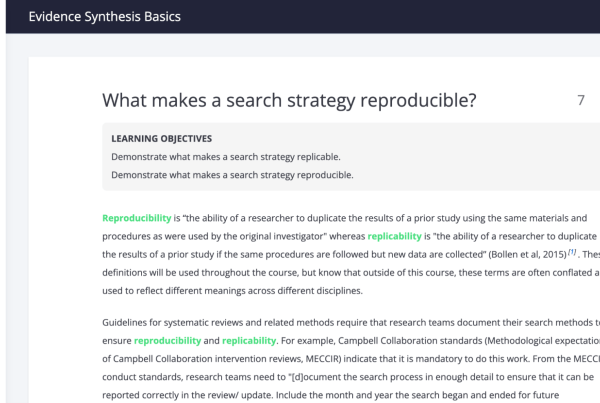By Allison Campbell-Jensen
Information about research at a university is of vital importance; it can feed the institutional reputation of a university, as well as the profiles of individual scholars. It can fuel collaborations, answer questions about grants, and be used by others doing research. Research information management (RIM) is the practice of collecting, curating, and using metadata about research activities for these purposes.
Yet when Jan Fransen, Service Lead for RIM in University of Minnesota Libraries, joined with colleagues around the world to conduct an international survey of RIM systems, they found few responses from U.S. institutions. If institutions were managing research information, they did not necessarily recognize the work they were doing as fitting under that umbrella or perhaps even the value of developing a landscape of scholarly communications for their institutions. And the decentralized nature of the systems reflected a typical pattern among U.S. institutions.
To define research information management in a way that would explicate its value to institutions, Fransen and four co-authors took on a research project that was recently published by OCLC Research, the research arm of a libraries nonprofit organization. The co-authors conducted case studies of five institutions in areas encompassed by research information management:
- faculty activity reporting
- public portals
- metadata reuse in places like department and center sites
- strategic reporting and decision support
- open access workflows, and
- compliance monitoring
Fransen, who also manages the Experts@Minnesota database, was granted a 12-week research leave to write the report.
The team’s report offers higher education leaders several recommendations for improvement. The five case studies were detailed in a separate report.
A focus on data
Data that would be useful in all these possible cases needs to be as complete and transparent as possible, according to the report. Data of this quality doesn’t just happen.
—[from Bryant, Rebecca, Jan Fransen, Pablo de Castro. Brenna Helmstutler, and David Scherer. 2021. Research Information Management in the United States. Dublin, OH: OCLC Research. https://doi.org/10.25333/8hgy-s428, p. 29]
“A system like this can be a great benefit to any institution but like any other enterprise system, it requires investment,” says Fransen. “It requires money, people’s time and attention to the quality of the data, the completeness of the data and how that data is disseminated throughout the institution.”
Data curation is a key element. Another essential, Fransen says, is making clear the identity of researchers.
“Institutions need to be promoting persistent identifiers, like ORCID, for all researchers, for anybody who’s involved in creating research output,” she says. “At this point, it should just be the norm.” ORCID, which stands for Open Researcher and Contributor ID, strives to enable transparent and trustworthy connections between researchers, their contributions, and their affiliations by providing a unique, persistent identifier for individuals to use as they engage in research, scholarship, and innovation activities.
Developing a framework
 A section of the report on which Fransen has received the most feedback is an hourglass-shaped framework for analyzing RIM systems.
A section of the report on which Fransen has received the most feedback is an hourglass-shaped framework for analyzing RIM systems.
“You’ve got to have a source for data, you have to have a way to pull that data together in a place — a publication harvester is a big piece — you’re storing the data in some place, and you have to have a way to get that data out again.”
The framework allows people to compare RIM systems. It can also be a tool for evaluating products that institutions might consider. For the University of Minnesota, Elsevier Pure does most of these tasks.
“If we would decide to use a different product, what pieces would we need to fill in? By the same token, we saw cases where a particular product was used for part of the RIM system and a different product was used for another part,” she says. “How are you going to take the pieces that are out there in the marketplace, together maybe with what you develop internally, and assemble the system that you need?” The framework can help with creating a complete picture.
Creating a community
Libraries staff are very important to this work, but they should not be the only actors in research information management. Making links within a research institution is a goal for RIM systems.
“The most successful systems we are seeing right now are those where there are people from multiple places and perspectives within the institution,” Fransen says. “The most common partnership being the libraries and the research office, with buy-in from information technology and from people involved in faculty activity reporting, promotion and tenure. [Linking] people from across the institution; that’s where you get full value out of a system like this.”
In addition, Fransen says: “We are working toward building a community of research institutions using research information management systems throughout the U.S.” She belongs to a recently formed board organizing an Expert Finders Systems Forum and is enthusiastic about bringing people together.
The connections created should contribute to more robust RIM systems and more progress toward improvement for research institutions across the United States.





